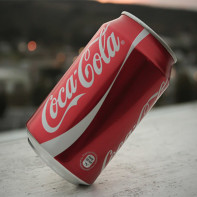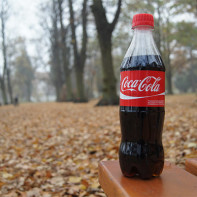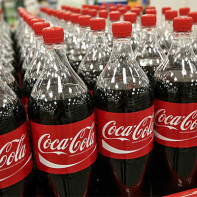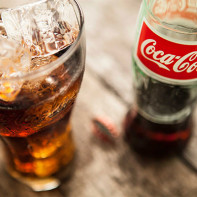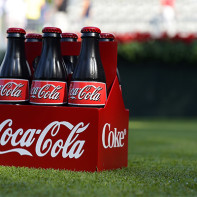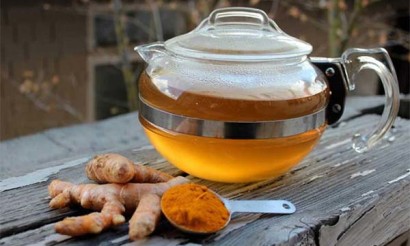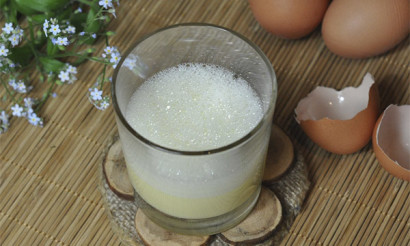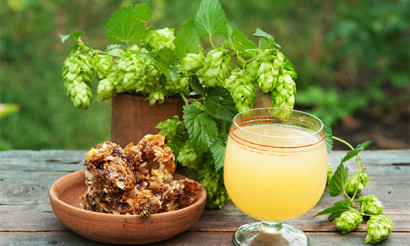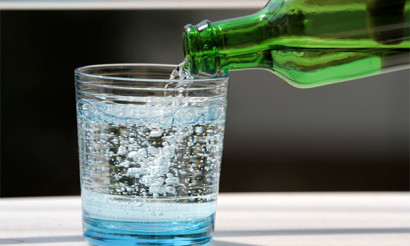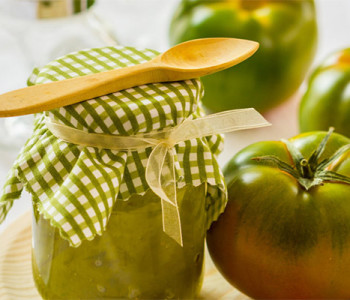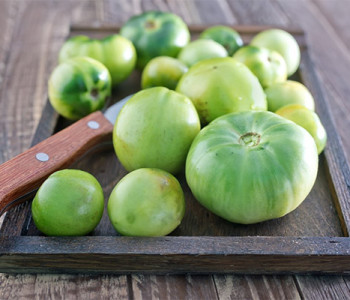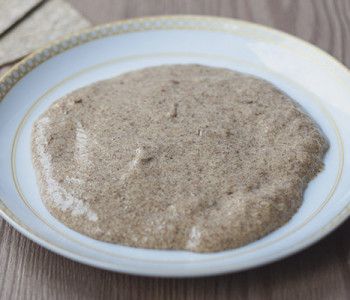Coca-Cola: health benefits and harms
The drink Coca-Cola became quite popular in the XIX century. It is sold on every corner, especially it is in demand on hot summer days to quench thirst. Often ice cubes are added to it. The constant advertising of soda pop everywhere increases the demand for the product. The drink is sold in stores in tin cans, glass and plastic bottles. In recent years, it has been studied by experts, about which there are heated debates about its harm and benefits. Questions about the benefits of carbonated beverage arise and ordinary consumers after a detailed study of the composition. What are the useful properties and harms of Coca-Cola?
- What Coca-Cola is made of
- Types
- What is the difference between Coca-Cola and Pepsi
- Composition and Calories
- What is Coca-Cola good for?
- Can I drink Coca-Cola during Pregnancy and Breastfeeding?
- Benefits and Harms of Coca-Cola for Children
- Coca-Cola medicinal properties
- Home Use
- Coca-Cola in cosmetology
- Harm and Contraindications
- How much cola can be drunk per day
- How to Make Coca-Cola at Home
- Expiry Date of Coca-Cola
- Interesting facts about Coca-Cola
How Coca-Cola is made
The drink first appeared in 1886, it was the brainchild of a pharmacist from America Pemberton. The specialist tried to create a drug based on the coca plant. The drug was supposed to have an analgesic effect on the body, as well as to reduce blood pressure. Since then, the composition of the product has changed (changed to more simplified and accessible ingredients) and became the most popular branded drink. The composition of today's Coca-Cola has a long list of ingredients.
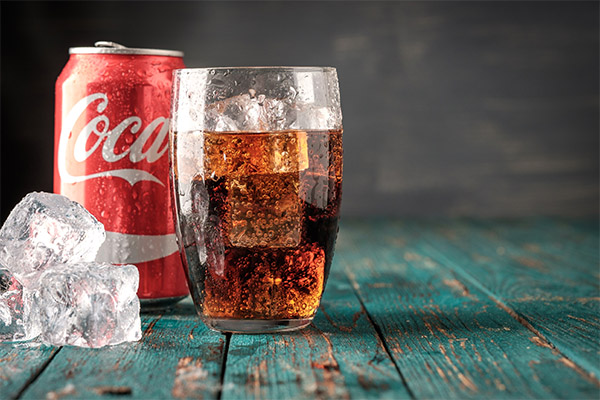
The Internet says that the true secret recipe of the Atlanta pharmacist has already been revealed, and the soda is made from sugar (10.58% W/V), caffeine (150 MG/L), phosphoric acid (0.544 G/L), caramel (0.11%), coca extract (0.015% W/V) and carbon dioxide (7.5 G/l).
Types
The drink has a huge assortment of types, varying in flavor. The product is usually sold in the country in which it is produced. For example, people in Japan and Korea are ardent fans of Coca-Cola and prefer to add lime, mint, green tea, and orange to the drink. The French prefer a coffee-flavored drink, New Zealand likes berry-flavored Coca-Cola, and the Dutch like a banana-flavored carbonated product. In our country and in America taste preferences have a wider range. Russians have a preference for Coca-Cola in flavor:
- cherry;
- lemon;
- strawberry;
- vanilla;
- zero (no sugar);
- original.
Interesting fact: the color of the drink does not change depending on the taste. Every year the range of Coca-Cola is updated with new flavors, the design of the bottle changes, but the technology of production remains unchanged.
How Coca-Cola differs from Pepsi
Historically, Coca-Cola was produced much earlier. The famous Pepsi drink was also later created by one of the American pharmacists from New Bern, his name was Caleb Bradham. Unlike Coca-Cola, it did not contain cocaine from coca leaves or caffeine from cola nuts. The drink contained the digestive enzyme pepsin. It was also created to be used for medicinal purposes. Only the purpose of Pepsi was to improve digestion. Pepsi was originally sold in 340 ml bottles, while Coke was bottled in 170 ml containers. The price was the same, but the difference in volume was significant.
Consumers do not always perceive differences between the two popular drinks. They have an identical smell, color and taste. The basic composition of Coca-Cola is still unchanged after cocaine was banned in 1903, while Pepsi is constantly being improved with the addition of various ingredients. Currently, both sodas are made mostly from sugar and water with various acids added, such as citric acid.
Composition and Calories
The harmful and beneficial properties of Coca-Cola are due to its ingredients. It is believed that the real composition of the product is kept secret, but thanks to research by specialists, the main components have been established:
- caffeine;
- sucrose;
- sucralose;
- sodium benzoate;
- sodium cyclamate;
- methyl hydroxide;
- orthophosphoric acid.
Each of these components affects the human body in a special way, some are harmful and others are beneficial. For 100 grams of classic Coca-Cola the caloric value is 42 kcal. In the drink there are no proteins and fats, but there are carbohydrates. The low-calorie form of Zero drink has only 0.3 kcal per 100 grams.
What is the benefit of Coca-Cola?
Part of the drink caffeine stimulates the mental and physical work of the body. Drinking one cup of Coca-Cola releases serotonin, the hormone of joy. Sucrose helps to get much needed glucose. However, an excess of the substance can lead to poor digestion and, as a consequence, provoke the appearance of excess weight.
The drink is also a great way to deal with rust. If it is impossible to unscrew the screw, then you just need to wet a piece of cloth with Coca-Cola and wrap it around it. After a while, the product will unscrew with ease. The same effect can be obtained when removing stains that are difficult to remove from clothing. To do this, things with stains are soaked for a few minutes in water with the addition of a can of cola.
Is Coca-Cola safe during pregnancy and breastfeeding?
The drink is undesirable for pregnant and lactating women. The caffeine contained in this drink is prohibited during pregnancy, because it increases the excitability and leads to insomnia. Coca-Cola is rich in dyes, which may negatively affect the health of the unborn child. It is especially dangerous to drink the drink in the first trimester, when the fetus is actively forming. Soda has a harsh effect on the walls of the stomach, so women may experience heartburn, belching and pain in the gastrointestinal area.
When consuming the drink during lactation, a woman can harm herself and the baby. Carbonated synthetic drinks disrupt metabolism, calcium is washed out of the body, and tooth enamel is destroyed. Coca-Cola is very dangerous for infants and small children. It may result in the destruction of the nervous system, digestion disorders, increased gas accumulation, and as a consequence, colics may appear. The use of Coca-Cola negatively affects the overall development of children.
The benefits and harms of Coca-Cola for children
A popular drink is very liked by children of all ages. Not all parents pay attention to the amount of drink they drink, and for good reason. Coca-Cola is strictly forbidden for children under 3 years of age. Older children can benefit from the drink. For example, caffeine improves memory and increases performance. Thanks to the drink you can overcome severe mental stress by activating the brain. Coca-Cola boosts your mood, gives you a charge of vivacity. To get only positive effects from the drink, it should be consumed rarely and in small quantities.
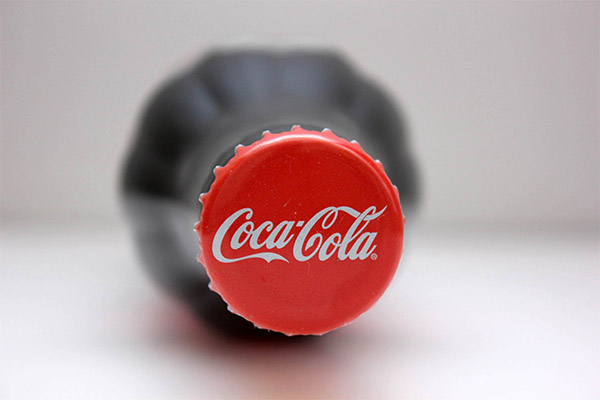
If a child drinks soda systematically, it can be dangerous for the body. Heart problems begin to occur, the pressure rises, and the negative impact on the gastrointestinal tract is also noted. The orthophosphoric acid contained in this drink promotes the leaching of calcium from the body. This has a detrimental effect on the state of bones, enamel and nails. In addition, regular increased consumption of Coca-Cola can be addictive. It is often quite difficult for children to refuse a tasty drink.
Therapeutic properties of Coca-Cola
Specialists have identified the main therapeutic effect of drinking Coca-Cola. The drink has a beneficial effect on the work of the intestines. It is able to destroy the formations consisting of fibers or hair in the stomach. These formations interfere with the movement of food and cause pain.
Also, studies have shown that drinking the drink can help remove stones from the stomach. This happens due to the content of phosphoric and carbonic acids in the composition of the lemonade. However, we should not forget that there is very little beneficial effect from soda.
A carbonated drink can help with poisoning. The elimination of nausea takes place. After vomiting, drinking cola will enrich the body with carbohydrates, needed salts and fluids. In order for Coca-Cola to have a therapeutic effect, you must open the can and let the gas out completely. Only in this case you can count on the help of the black drink.
Using Coca-Cola in the Home
Tasty drink will be the first assistant to solve many domestic problems.
- You can use it to clean the plumbing. A can of lemonade should be poured into the sink or toilet, left overnight, then rinse with water.
- Coca-Cola is great to cope with a variety of stains on clothing. To do this, simply soak things in water with the addition of a can of the drink.
- Another important thing that the universal drink will cope with is washing windows. Coca-Cola contains citric acid, which is used to make almost all cleaning products.
- The chemical components present in the drink are able to cope with heavy dirt on dishes and appliances. The soda should simply be poured over soiled items and left for some time.
- Coca-Cola is an ideal remedy to fight against harmful insects. The pleasant smell of the drink attracts bees, flies and mosquitoes, and once in the liquid consistency, the insects are killed. Indian farmers specifically use Coca-Cola to control garden pests.
The properties of this universal drink can be described for a long time. The main thing is that due to its composition, the drink can be beneficial in the home.
Coca-Cola in Cosmetology
- Coca-Cola contains phosphoric acid, which is used as a medicine to strengthen hair follicles. The soda must be diluted with water beforehand. Coke is also excellent for restoring hair structure after an unsuccessful coloring.
- The drink is used to lighten the hair strands. If you wanted to lighten your hair it is not necessary to buy hydrogen peroxide: everyone's favorite drink will do the job perfectly.
- You can add cola to facial tonics: in this case, the care product will additionally lighten your skin.
Harm and contraindications
Coca-Cola has more harm than good for the body. In order not to cause significant damage to the body, it is necessary to watch the dosage. Drink the drink from time to time, not every day. Increased consumption can provoke the development of cardiac abnormalities, can begin to grow cancerous tumors. Caffeine badly affects blood pressure, so experts forbid the use of cola to people suffering from hypertension. Doctors forbid it for people who have problems with blood clotting. Frequent consumption of the sweet drink leads to calcium washout from the body, and this is fraught with the occurrence of pathologies of the musculoskeletal system. Bones become brittle and are often prone to various injuries.
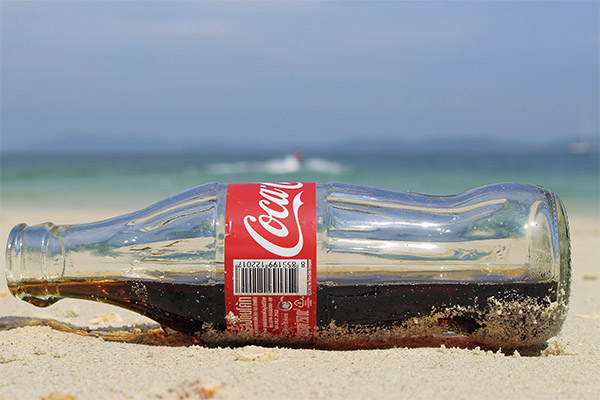
The presence of a large amount of sugar can disrupt normal liver function. It is especially dangerous for children's bodies. Coca-Cola is strictly forbidden to people suffering from overweight problems and diabetics. Some components of the drink can be addictive. Regular use can lead to headaches and depression. When the metabolism is disturbed, the whole body malfunctions.
It is not recommended to drink Coca-Cola drink to people suffering from stomach diseases: gastritis, ulcers. Increased intake of cola can provoke the development of pancreatitis. It is important not to forget that this soda has no definite benefits for the person, so you can always do without it.
Especially children should not be allowed to drink Coca-Cola drink. Children's body is harmful to any carbonated water. For the full growth and development it is necessary to exclude all harmful products and adjust the diet, only then you can hope for excellent health and avoid the development of diseases.
How much Coke Can I Drink per Day?
In order not to harm your health, you should adhere to a certain dosage. According to medical recommendations, carbohydrates should be present in the daily diet at the rate of 10% of total calories. This means that men should consume up to 9 spoonfuls of sugar daily, women - up to 6, and young children - up to 3. Therefore, men are allowed to drink 330 grams of the drink, women about 200 grams, and children should exclude the tasty Coca-Cola drink from their diet altogether.
How to Make Coca-Cola at Home
The popular Coca-Cola drink can be made yourself at home. It will turn out without preservatives and dyes, so it will be much healthier. To begin with, you need to prepare the necessary products:
- A liter of water;
- 2 oranges;
- 300 grams of sugar;
- water with gas;
- lime and lemon;
- 2 tbsp. natural coffee;
- 1 tsp. ground cinnamon;
- 2 tsp. ground coriander;
- 1/4 tsp. nutmeg;
- 0,5 ч. spoonfuls of vanilla essence.
First you need to boil the syrup. Shredded citrus zest should be put in a saucepan, add cinnamon, nutmeg and coriander. Pour water over all the contents, put sugar and mix well. Bring the mass to a boil, then boil for a minute. After that, the pan is removed from the fire, pour into it the citrus juice and the vanilla essence. All need to cool. You can use, pre-diluted with carbonated water. Such a drink can be stored in the refrigerator for about 2 weeks. Very tasty natural homemade Coca-Cola will be the best substitute for the branded store analogues.
Shelf life of Coca-Cola
The drink should be consumed immediately after opening the can or bottle. As the product breaks the seal, there is a change in taste. Do not keep an open can for long periods of time. The shelf life of the product is defined by the manufacturers as six months. Some people think that nothing bad will happen if you drink an expired drink. However, nothing good can come of it. The real expiration date ends even earlier than indicated on the label. Therefore, it is better to give preference to a recently released product.
Interesting facts about Coca-Cola
In general, the history of the origin of Coca-Cola is quite interesting. After an American pharmacist invented a cure for pain and nervous disorders, Coca-Cola was sold in pharmacies. One day, a visitor with a hangover came into the pharmacy. After tasting the medicine, the man expressed the opinion that it would be good to add gas here. And that's when everyone's favorite Coca-Cola appeared. From the beginning of the drink's creation until today, history preserves many interesting facts about Coca-Cola.
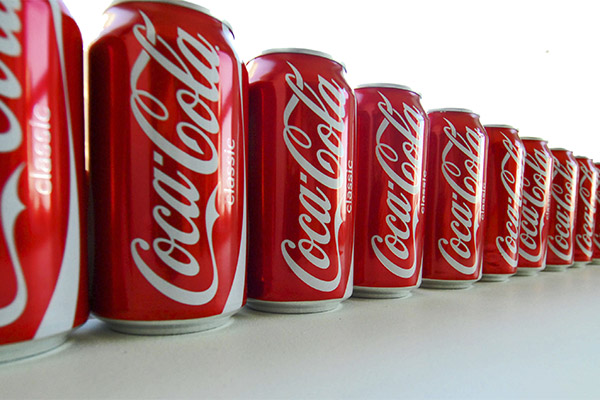
- The first drink was sold in America in a vending machine. It was not in demand, so the product was unprofitable.
- The popularity of the drink was helped by the ban on alcohol in 1886. The drink contained an herb with a narcotic effect, from which the name Coke came.
- Orthophosphoric acid is aggressive, so Coca-Cola does a great job cleaning stubborn dirt and even rust.
- The pharmacist who invented today's popular drink ended up living in poverty and was buried in a cemetery for the poor.
- The Coca-Cola drink, which is produced in its native country, the United States, tastes very different from what we are used to.
- In order to produce the drink without changing the recipe the producers made a contract with the anti-drug agency to import the narcotic coca plant. So far, they have been smuggling large quantities of the narcotic ingredient into America unimpeded, even though it has not been part of Coca-Cola for a long time.
The sought-after drink is sold all over the world. Many people prefer the unusual pleasant taste of Coca-Cola. The rich and extensive history of the famous drink makes it even more interesting. One should always know a measure when drinking it. Excessive and systematic consumption of Coca-Cola can be detrimental to health and lead to the development of serious diseases. But the drink can be just an indispensable helper at home. With its help you can solve many domestic and cosmetic problems.
«Important: All information on this site is provided solely for introductory purposes. Before using any recommendations, you should consult with a specialist. specialist. Neither the editors nor the authors shall be held liable for any possible harm caused by materials."

